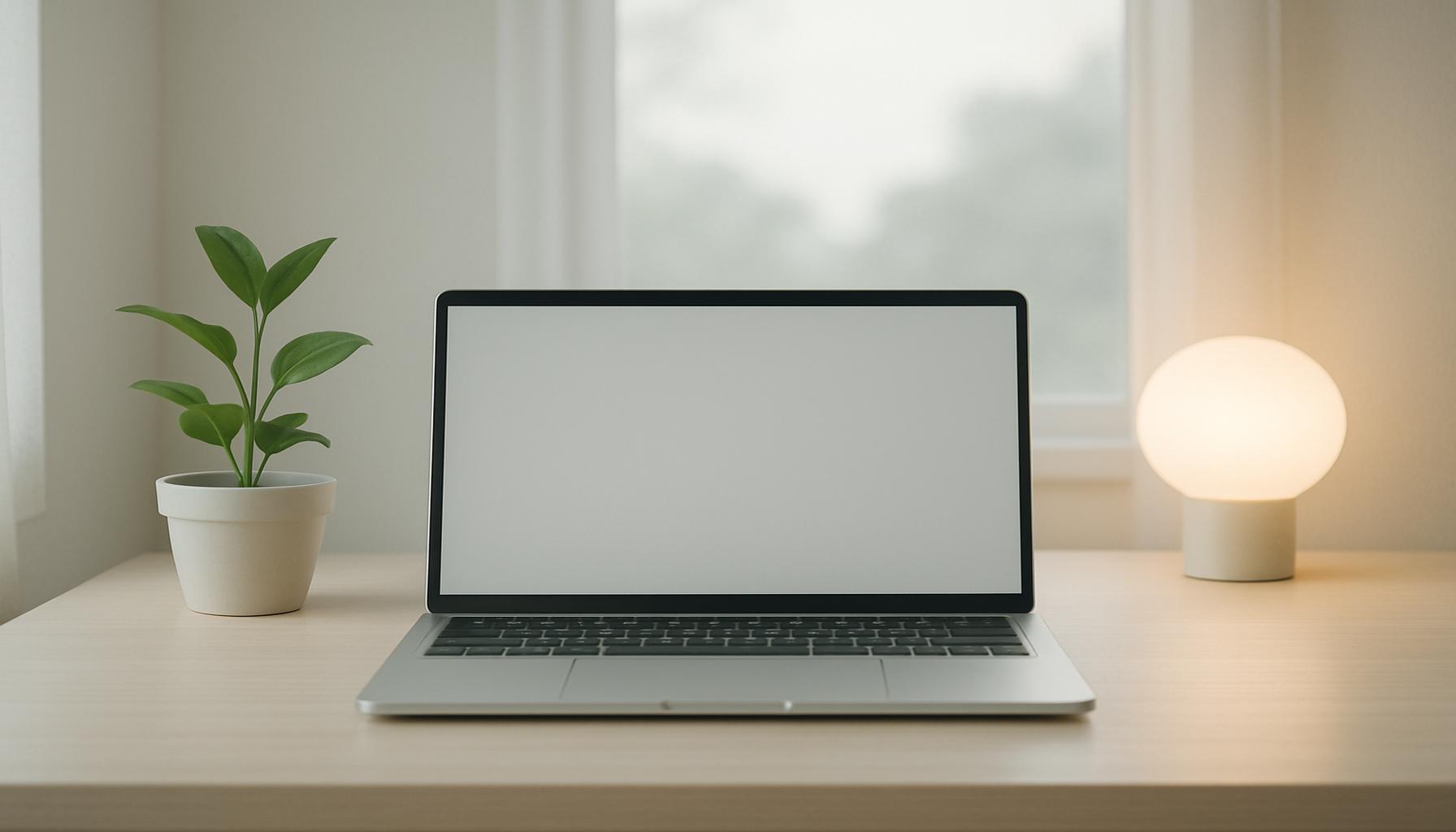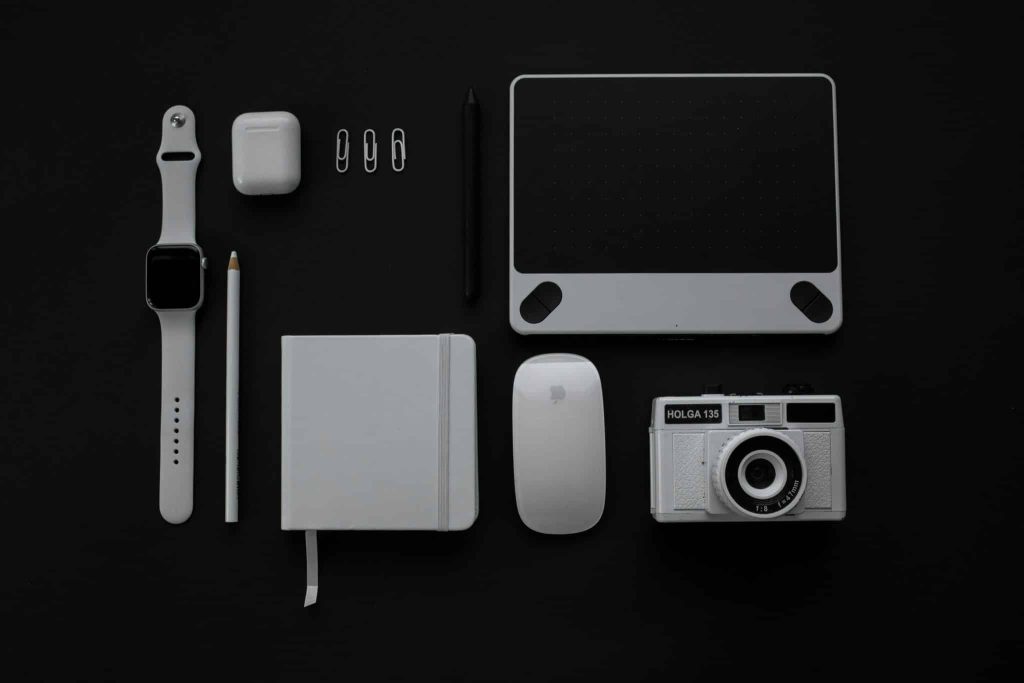Digital Serenity: How Technology Minimalism Can Enhance Your Well-Being

The Rise of Digital Serenity
As technology continues to advance at a breathtaking pace, the struggle to maintain a healthy relationship with the digital world has never been more vital. In recent years, there has been a noticeable shift among individuals towards seeking digital serenity. This growing movement aims to mitigate the feelings of overwhelm experienced by many Americans caused by constant connectivity and information overload. The reality is that an astonishing 70% of adults in the U.S. report feeling overwhelmed by technology, prompting a collective reevaluation of how we engage with our devices.
The negative impact of excessive screen time is becoming increasingly clear, with research linking it to heightened levels of anxiety and depression. Studies suggest that spending over three hours a day on screens can contribute to mental health issues, particularly among younger demographics. Issues like disrupted sleep patterns and feelings of isolation have also been noted as side effects of our digital habits. In contrast, the philosophy of minimalism—which advocates for simplicity and intentionality—offers practical solutions to ease this burden.
Understanding Technology Minimalism
But what exactly does embracing technology minimalism mean? At its core, it involves selecting essential applications and platforms that genuinely enrich one’s life while filtering out the unnecessary distractions. For example, individuals may choose to retain only two or three essential social media apps while deleting others that serve no real purpose or create conflict in their daily routines.
Establishing tech-free zones is another effective strategy. For instance, many people are now designating their bedrooms as device-free retreats, promoting better sleep hygiene and more personal connection with loved ones. Additionally, regularly decluttering digital devices—such as cleaning up email inboxes, deleting unused apps, and organizing files—can significantly reduce mental clutter and enhance clarity.
The Benefits of Mindfulness in Technology Use
These minimalist principles not only foster a healthier interaction with technology but also encourage mindfulness in everyday life. By consciously choosing when and how to use technology, individuals can alleviate distractions that often undermine focus and creativity. For instance, artists, writers, and other creatives frequently report heightened productivity when they limit device usage during their work sessions.

Furthermore, reducing technology-related stress can bolster emotional resilience. By prioritizing face-to-face interactions and nurturing real-world relationships, individuals can create a deeper sense of community and support—a fundamental component of well-being. In a world where so many are preoccupied by the notifications and demands of digital life, the pursuit of digital serenity stands as a beacon of hope for fostering balance, clarity, and fulfillment.
As we further explore the principles of technology minimalism, it becomes evident that these practices can lead to a richer, more intentional existence. Engaging in this journey invites individuals to reclaim their time and redirect their energies toward what they truly value, laying the groundwork for a life with purpose and depth outside the screen.
DIVE DEEPER: Click here to discover more insights</p
Embracing the Philosophy of Less
In a digitally saturated world, technology minimalism stands as a powerful antidote to the chaos spawned by constant notifications, social media updates, and the pressures of an always-connected lifestyle. By adopting this philosophy, individuals can cultivate a more mindful approach to technology use that enhances well-being and digital serenity. Central to this movement is the idea that less is more; less screen time, less digital noise, and ultimately, more clarity and peace of mind.
Key Principles of Technology Minimalism
Embracing technology minimalism involves various practical steps that empower individuals to reclaim their time and attention. Here are some fundamental principles that can guide this transformative journey:
- Intentional Device Use: Individuals should be deliberate about which devices and applications they choose to engage with. By examining whether a particular app adds value to daily life or simply serves as a distraction, users can streamline their digital interactions.
- Scheduled Tech-Free Time: Creating dedicated periods free from screens can vastly enhance well-being. Designating family game nights or outdoor activities without devices can foster deeper connections and foster positive experiences.
- Mindful Content Consumption: It’s essential to curate digital content carefully. Subscribing to podcasts, newsletters, or channels that promote personal growth can replace mindless scrolling with enriching engagement.
- Utilizing Technology for Good: Technology can still play a beneficial role in our lives if used thoughtfully. One might consider using apps designed for meditation, productivity, or fitness, focusing on intentionally enhancing health and well-being.
The Psychological Impact of Digital Minimalism
The practice of digital minimalism extends beyond behavioral adjustments; it also profoundly impacts mental health. By decreasing the barrage of digital distractions, individuals often find their stress levels significantly reduced. Research indicates that people who practice technology minimalism report greater feelings of contentment, emotional regulation, and creativity. A study published by the Journal of Health Psychology found that subjects who limited their social media time to just 30 minutes per day experienced a marked decrease in feelings of loneliness and depression.
Moreover, the act of decluttering one’s digital environment can lead to cognitive clarity. Imagine opening your phone or computer to a screen devoid of unnecessary apps, cluttered email threads, and distracting notifications. This clean slate can foster enhanced focus and productivity, ultimately reshaping how individuals prioritize their tasks and goals.
As we navigate this ongoing journey towards digital serenity, adhering to the principles of technology minimalism allows individuals not only to better manage their digital consumption but also to craft a more fulfilling and balanced life. Recognizing the core motivations behind our technology use can empower individuals to shift their habits and embrace a new way of living—one that harmonizes the benefits of digital engagement with a sustainable practice of well-being.
| Advantage | Description |
|---|---|
| Enhanced Focus | By eliminating digital distractions, individuals can achieve a greater level of concentration. |
| Improved Mental Clarity | A minimalist approach to technology allows for clearer thinking and reduced cognitive overload. |
| Stress Reduction | Less screen time can lead to lower anxiety levels and a more peaceful mindset. |
| Better Sleep Quality | Reduced exposure to screens before bed enhances sleep hygiene and overall health. |
In adopting a technology minimalist approach, individuals not only find themselves more grounded but also experience a multitude of profound health benefits. The concept of Digital Serenity focuses on creating a balance in the digital realm, encouraging users to be deliberate about their tech use. This leads to improved mental clarity, as the clutter of excessive notifications and information is significantly diminished. Additionally, by minimizing screen exposure, stress levels decrease, positively affecting overall well-being. Better sleep quality is another remarkable advantage; as fewer screens at night prevent disruption in melatonin production, enhancing restorative rest. Ultimately, embracing this lifestyle is about elevating your overall well-being while fostering an environment ripe for personal growth. Exploring these dimensions of technology minimalism may inspire transformative changes that resonate deeply with modern living.
DISCOVER MORE: Click here to enhance your digital simplicity
Finding Balance in a Hyper-Connected World
The concept of balance in our digital lives hinges on the understanding that not all technology impacts us equally. A key tenet of technology minimalism is recognizing that some digital tools can actually serve as enablers for well-being when used mindfully. For instance, harnessing technology for educational purposes or personal development can redirect energy typically wasted on distractions into growth-oriented endeavors. This approach transforms digital spaces into avenues for learning and self-improvement.
Digital Detox and Its Benefits
Another critical aspect of achieving digital serenity is undertaking regular digital detoxes. These detox periods allow individuals to step away from the incessant buzz of social media and constant notifications. A growing body of evidence suggests that short breaks from technology can lead to significant psychological benefits. For example, a ten-day digital detox study conducted by the University of Kent revealed that participants experienced decreased anxiety, improved mood, and increased self-esteem once they re-engaged with their digital devices.
Moreover, implementing a structured digital detox can serve to reset our relationship with technology. It enables users to take stock of their digital consumption patterns and assess which aspects contribute positively to their lives, paving the way for more intentional usage in the future. This practice can extend beyond a temporary cleanse; it offers an opportunity to continuously evaluate and refine one’s interactions with technology.
Community and Connection in Digital Minimalism
Contrary to the belief that technology erodes connections, thoughtful engagement can strengthen relationships. Embracing technology minimalism can lead individuals to prioritize quality over quantity in their digital interactions. Instead of hastily scrolling through acquaintances’ posts, one can foster deeper connections by opting for video calls or engaging in meaningful conversations with close friends and family.
A report by the Pew Research Center found that while social media can sometimes increase feelings of loneliness, those who utilize digital communication sparingly to create intentional, genuine connections find more satisfaction in their relationships. This highlights the importance of setting boundaries around technology usage that prioritize human connection over digital noise.
Additional Strategies for Long-Term Change
In addition to embracing the principles of technology minimalism, developing long-term strategies can further enhance one’s digital wellness. One approach includes optimizing device settings to minimize distractions. Individuals can take control of technology by disabling unnecessary notifications, sorting apps by usage frequency, and using features that limit screen time.
Furthermore, creating a bedtime routine that prioritizes tech-free time can significantly improve sleep quality. Research has shown that exposure to blue light from screens can interfere with sleep, making a strong case for implementing tech-free periods in the evening. Engaging in relaxing activities—such as reading, journaling, or meditative practices—before bed can enhance the transition to restorative sleep, laying the foundation for a more productive and fulfilling day ahead.
Lastly, embracing technology minimalism allows individuals to cultivate a deeper awareness of their values. It prompts reflection on what truly matters and encourages individuals to invest their time and attention where they align most strongly, further enhancing overall well-being. By taking control of their digital environments, individuals can navigate the landscape of technology with purpose, ultimately discovering a newfound sense of tranquility.
DISCOVER MORE: Click here to enhance your productivity
Conclusion: Embracing Digital Serenity for a Healthier Tomorrow
As we navigate the complexities of our hyper-connected lives, embracing technology minimalism emerges as a vital strategy for enhancing well-being. By intentionally curating our digital interactions, we can transform technology from a source of stress to a powerful tool for personal growth and meaningful connection. The benefits of regular digital detoxes cannot be overstated; they provide the essential space for reflection, allowing us to discern what truly matters in our lives.
Moreover, fostering authentic relationships through selective digital engagement can lead to a profound sense of community and belonging, combating the isolation that often accompanies excessive technology use. As studies have shown, the quality of our interactions can significantly impact our emotional health, highlighting the importance of prioritizing depth over breadth in our online connections.
Ultimately, adopting a mindful approach to technology encourages deeper self-awareness, guiding individuals to align their digital habits with their core values. This realignment fosters a renewed sense of purpose in our lives, allowing us to cultivate tranquility amidst the chaos of constant connectivity. As we continue to explore the potential of digital serenity, we open the door to a healthier, more fulfilling existence—one that champions personal growth, meaningful relationships, and the joy of being present in the moment.


